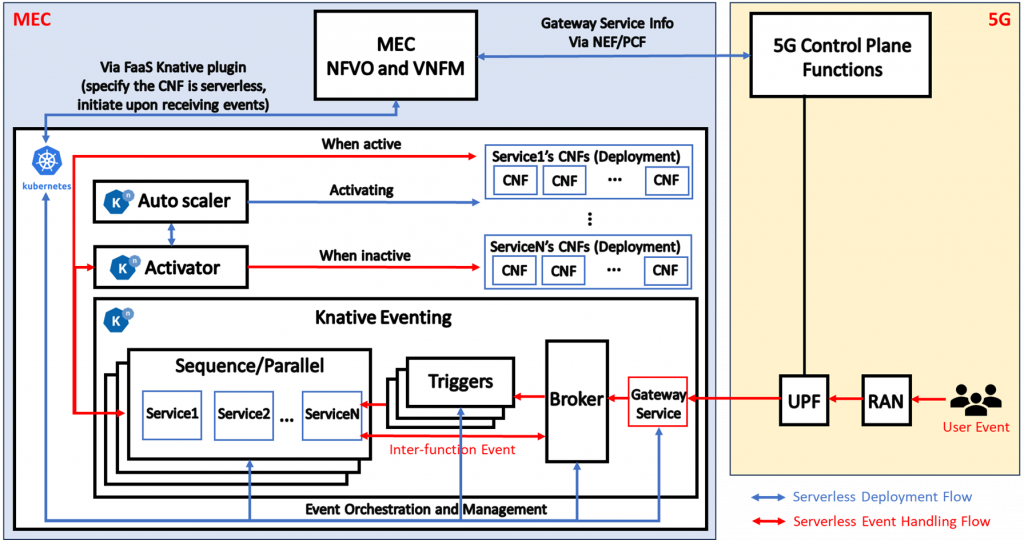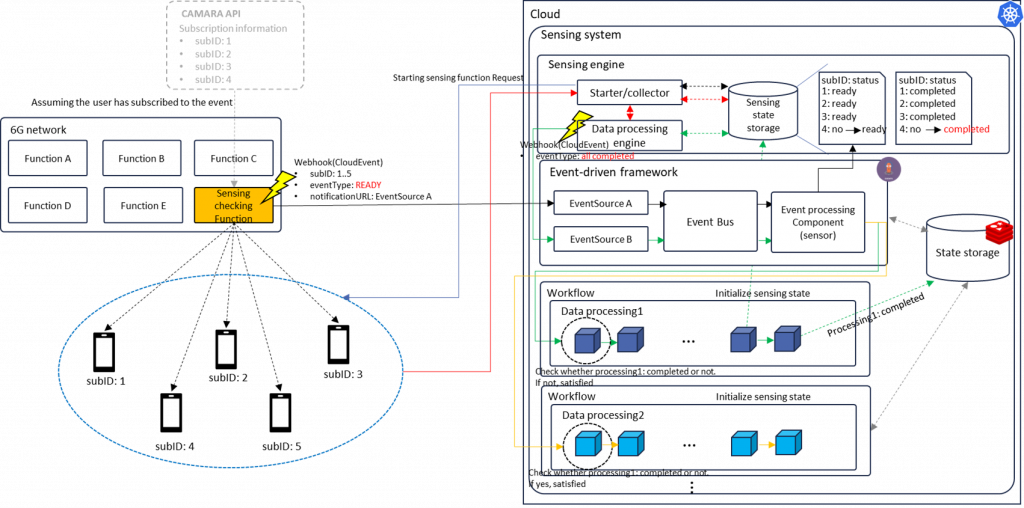Development of Candidate Element Technology for Intelligent 6G Mobile Core Network
Main institute: Soongsil Univ.
Ministry: MSIT(Ministry of Science and ICT)
Organization: IITP (Institute for Information & communications Technology Promotion)

The Development of Candidate Element Technology for Intelligent 6G Mobile Core Networks project aims to to study the source element technologies of 6G mobile core networks that support network and computing convergence, hyper-distribution and automation, and AI application orchestration. This project was started in 2022 and will be ended in 2025.
- Development of Candidate Architectures for Intelligent 6G Mobile Core Networks
- A Study on the Applicability of New Protocols
- A Study on Automation Technology for Distributed Intelligence Environment of 6G Network
Research and Development Achievements
KPI (Stage 1)
| Evaluation Item | Target Value | Description |
|---|---|---|
| Dynamic Scaling Function | 30 % | A metric that combines the procedures and time required to add a new Pod |
| FaaS Event Support (Types of Events) | 3 types | Support for more than three types of events that can trigger FaaS |
| Federation Function in Massive UPF Environment | 30 % | Service migration time (seconds) |
| AI/ML Data Native UPF Processing Speed | 20 % | Time measured for AI/ML data to be transmitted through the UPF (seconds) |
| AI Task Processing Rate | 60 % | Service throughput for AI training/inference tasks per unit time |
| Types of Intent-Based Automation | 3 types | Number of use cases that can be handled through intent-based management |
| Evaluation Item (Key Performance Indicator) | Unit | R&D Result / Target Value | Achievement Level |
|---|---|---|---|
| Dynamic Scaling Function | % | 56.86 / 30 | 100 |
| FaaS Event Support (Types of Events) | types | 3 / 3 | 100 |
| Federation Function in Massive UPF Environment | % | 80 / 30 | 100 |
| AI/ML Data Native UPF Processing Speed | % | 29.5 / 20 | 100 |
| AI Task Processing Rate | % | 47.9 / 30 | 100 |
| Types of Intent-Based Automation | types | 3 / 3 | 100 |
Key Activities
- Technology development based on an integrated architecture applying CATS technology to the Mobile User Plane of the 6G core network

- Proposal of a dynamic anycast IP PDU session establishment procedure for mobile networks supporting CATS-MUP-C
- Suggestion of a dynamic DNAI selection method during PDU session establishment to overcome the limitations of static configurations in the existing ETSI AF traffic routing procedure for anycast services
- Proposal of a dynamic anycast PDU session establishment method for mobile networks by integrating the CATS-MUP-C architecture to address the static limitations of GTP-U tunneling technology used in current 5G communication structures
- Definition of a serverless-enabled architecture based on 5G MEC

- Architectural definition of applying Knative, a serverless open-source project, to the MEC architecture
- Definition of the roles and procedures of the 5G core, MEC components, and Knative components in serverless deployment
- Definition of the serverless event flow and the operational procedure following event occurrence
- Procedure definitions for UE event handling and media streaming scenarios based on the defined architecture
- Scenario using a workflow-based FaaS system for multi-event processing

- Proposal of an enhanced federated learning method by jointly processing events from the 5G network and the federated learning server
- Proposal of an automated system for sensing and data processing tasks using network functions in response to various sensing change events from multiple devices in a 6G environment
Link to project-related software
- Bi-LSTM Traffic Prediction application, output prediction result as a Kubernetes CRD
- ML(BiLSTM) Traffic Prediction service – output TrafficStatCRD for the resource optimized Knative Hybrid Autoscaler
- knative-hybrid-scaling
- This operator take predicted traffic and pod’s Knative hybrid autoscaling profile as inputs
- DRL Agent in Concurrent Service Auto-scaling for Knative Resource quota-based Serverless System paper
- DRL + ML traffic prediction Agent – output DRLScaleAction CRD for Quota-based Knative Hybrid Autoscaler
- service-transition-experimental-analysis
- Test Repository for Federation Functionality among KPIs
